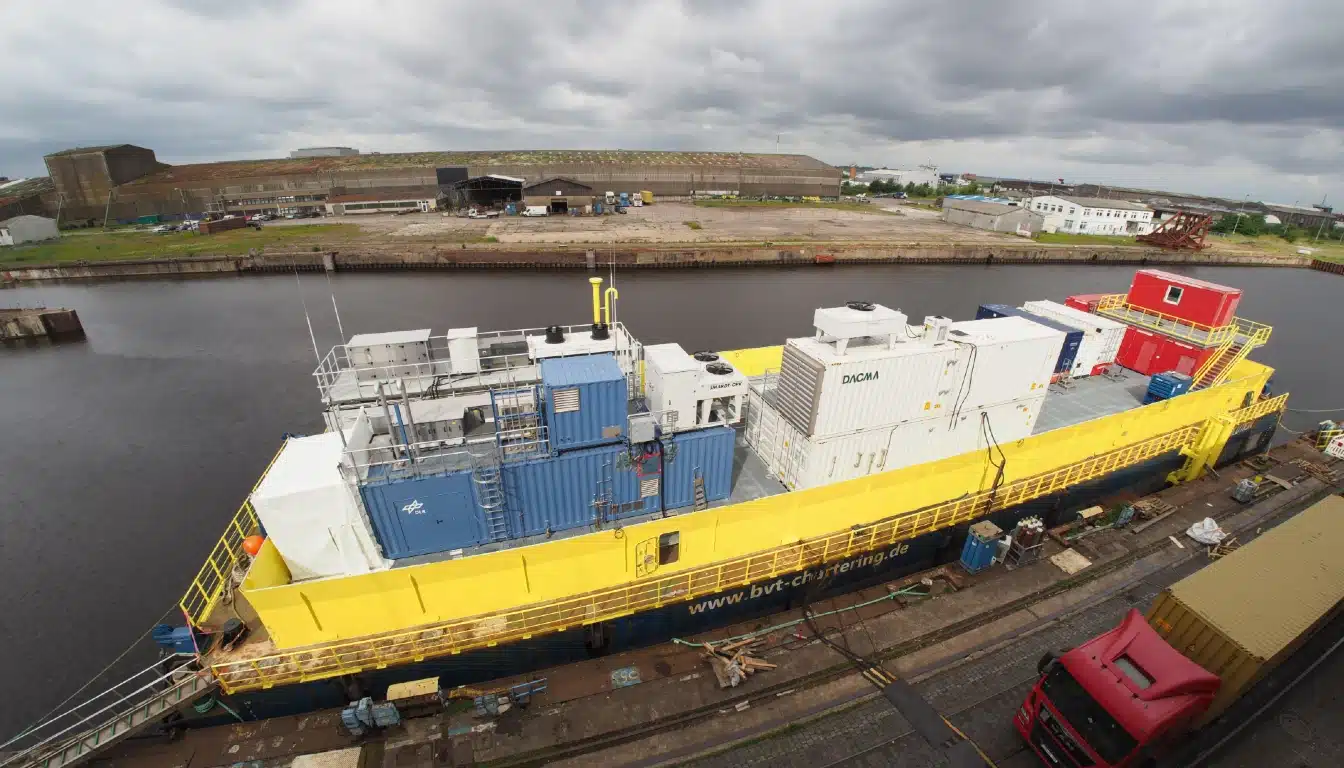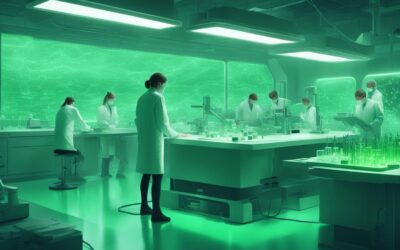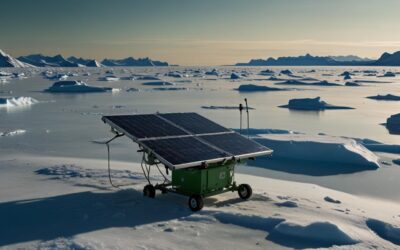The Karlsruhe Institute of Technology has unveiled a pioneering floating platform that converts offshore wind power, seawater, and ambient air into synthetic fuels using a modular, off-grid Power-to-X system. Testing will soon begin ahead of deployment near Helgoland Island, advancing Germany’s hydrogen strategy.
A groundbreaking development in offshore synthetic fuel production is underway with the launch of a floating platform designed to convert wind energy, seawater, and ambient air directly at sea into synthetic fuels. This pioneering project, led by the Karlsruhe Institute of Technology (KIT) in collaboration with partners including the German Aerospace Center (DLR) and TU Berlin, represents a comprehensive demonstration of the Power-to-X (PtX) process chain. The modular facility, installed on a barge anchored in the port of Bremerhaven, will begin operational testing before moving to open waters near Helgoland Island later this year.
The platform integrates several advanced technologies into a single, off-grid system capable of functioning dynamically in response to the varying availability of renewable offshore wind power. Key components include a direct air capture (DAC) system to extract carbon dioxide from ambient air, a seawater desalination unit, and a high-temperature electrolysis cell that produces hydrogen-rich synthesis gas. This synthesis gas then feeds a Fischer–Tropsch process, which combines green hydrogen and CO₂ to create synthetic fuels. Thanks to its modular construction, the system is adaptable, enabling scalable offshore fuel production without the need for grid connection.
This initiative forms part of the broader H2Mare hydrogen flagship project, a key element in Germany’s national hydrogen strategy supported by the Federal Ministry of Education and Research. H2Mare’s PtX-Wind sub-project specifically focuses on converting offshore-produced green hydrogen into derivative products such as liquid methane, methanol, and ammonia. The research team aims to perfect the entire process chain from offshore production to logistics while assessing maritime operational challenges, regulatory frameworks, and material performance in seawater conditions. Furthermore, the project includes the creation of a digital twin and concepts for larger, generic offshore PtX platforms that could potentially be integrated with wind turbines for more efficient hydrogen and fuel production at sea.
While this floating test platform is the first of its kind to comprehensively showcase synthetic fuel production from offshore wind, seawater, and ambient air, similar efforts are emerging globally. For instance, industrial-scale green ammonia production is being pursued by H2Carrier through its P2XFloater™—a floating facility that produces ammonia by synthesising green hydrogen from purified seawater with nitrogen extracted from the air. This design offers operational flexibility by eliminating the need for traditional land-based infrastructure such as storage tanks and piers, and it can position itself where renewable energy is most economically viable. The configuration also enhances resilience against natural disasters, thus underlining the potential advantages of floating platforms in renewable chemical synthesis.
The insights from the KIT-led floating fuel platform will provide crucial data on sustainable offshore fuel production and inform the development of future large-scale installations capable of powering maritime transport and industry with low-carbon synthetic fuels. Investigations will continue on the platform’s flexible operation under varying wind conditions, its environmental impacts, and the regulatory requirements for such innovative offshore energy systems.




